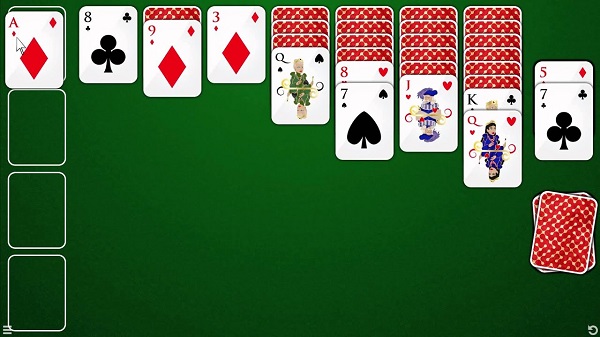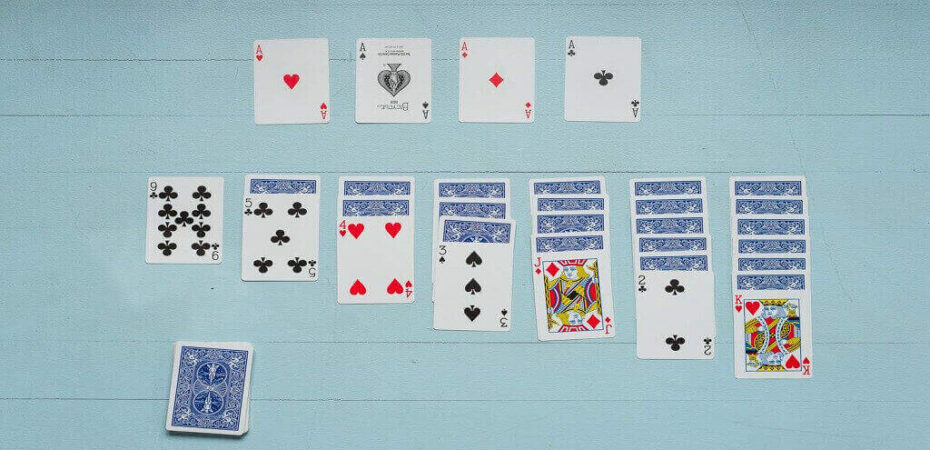Klondike Solitaire, a card game that has traversed generations, is cherished for its unique blend of simplicity and complexity. An excellent cognitive stimulant, it offers a soothing escape for some and a thrilling challenge for others. This guide is crafted to lead you through the fascinating world of Klondike Solitaire Turn One, a variant that is readily playable on the platform, Solitaires. We’ll traverse the game’s intriguing history, comprehend its rules and gameplay, and uncover strategies to master this popular Solitaire variant.
Journey through Time: Klondike Solitaire’s Intriguing Origins
The origins of Klondike Solitaire, also known as Solitaire or Patience, are shrouded in mystery. It is speculated to have been conceived in either Scandinavia or Germany in the late 1700s, while some ascribe its birth to France. The nomenclature ‘Klondike’ is believed to be associated with the Yukon region of Canada, site of the famed Gold Rush. Allegedly, the game was introduced there by gold-seekers who named it after the region.
The digital era of the late 20th century significantly amplified Klondike Solitaire’s popularity. Microsoft’s decision to incorporate a version of the game into its Windows operating system since 1990 introduced the game to a broader global audience.
Decoding Klondike Solitaire Turn One Rules

Klondike Solitaire Turn One, also referred to as ‘Draw One’, utilizes a regular 52-card deck. The game is structured around a stockpile, a waste pile, four foundation piles, and seven tableau piles.
- Stockpile: This pile holds the cards left after setting up the tableau.
- Waste Pile: Cards from the stockpile that aren’t immediately playable (or you decide against playing) are placed here.
- Foundation Piles: The ultimate objective is to fill these four piles, each corresponding to one of the four suits (hearts, diamonds, clubs, and spades). The target is to stack each pile in ascending order from Ace to King.
- Tableau Piles: Comprising seven piles, the tableau holds the cards for the main game. Each pile progressively increases by one card, from one card in the first pile to seven cards in the seventh. Only the topmost card is visible; the rest remain face-down.
Mastering the Gameplay
To initiate the game, shuffle the deck and arrange seven piles of cards on the tableau. Each pile should have one additional card than its predecessor, with only the top card facing up. The residual cards form the stockpile.
Gameplay involves shifting cards among the tableau piles, or from the stockpile or tableau to the foundations. The rules for moving cards include:
- Tableau piles must be formed in descending order and alternating colors. For instance, a black 9 can be positioned over a red 10.
- Only a King can be placed in an empty tableau slot.
- Foundation piles must be stacked in ascending order, beginning with the Ace, and must consist of cards from the same suit
In Klondike Solitaire Turn One, you cycle through the stockpile one card at a time, which can be played onto a foundation or tableau pile if permissible. If the card cannot or is not desired to be played, it is moved to the waste pile, and the next card is drawn. Once the stockpile is exhausted, it is flipped over (without reshuffling) for another round.
Securing Victory
The game concludes victoriously when all cards have been relocated to the foundation piles, each arranged in ascending order from Ace to King. The game is lost if no further moves can be executed, despite cycling through the stockpile repeatedly.
Cracking the Winning Strategies

While Klondike Solitaire partially relies on luck, strategic gameplay can significantly boost your winning odds. Here are a few tips:
- Play Smart: Prioritize moving cards from the tableau onto the foundations. This strategy reveals more gameplay options.
- Consider Alternatives: Avoid hastiness in making your moves. Analyze all possible moves and their potential future impacts.
- Preserve Your Stockpile: Refrain from exhausting your stockpile prematurely. It can be a valuable asset later when options are limited.
- Order of Play: Given a choice, always relocate cards from the largest tableau pile. This strategy expedites revealing the hidden cards.
- Room for Kings: As long as feasible, leave the final tableau slot vacant for a King. This precaution minimizes the likelihood of getting trapped later in the game.
Klondike Solitaire Turn One combines elements of chance and strategy. Although victory isn’t guaranteed every time, employing these strategies can heighten your success rate and, most importantly, enrich your gaming experience. Enjoy your game!
Read also:

